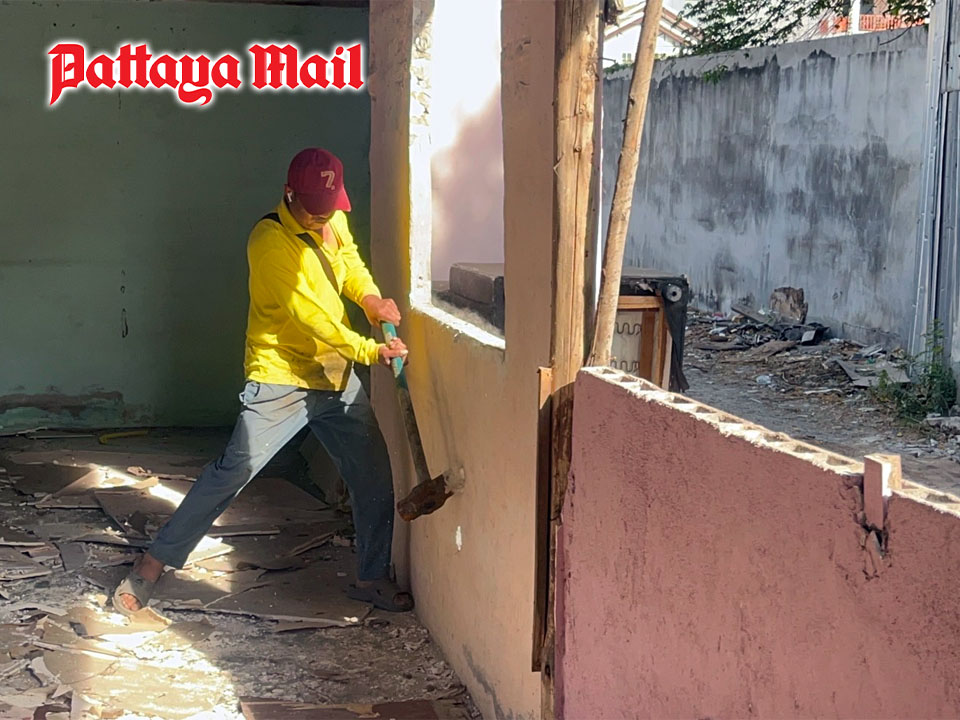
PATTAYA, Thailand – In recent years, Pattaya has been increasingly focused on improving public safety and addressing the issue of homelessness, which has become a visible concern in certain areas of the city. As part of efforts to tackle these challenges, local authorities have implemented measures such as demolishing homeless hotspots in strategic areas, with the hope of curbing drug use and improving the overall safety of the city.
These hotspots, often located in areas such as beach promenades or vacant lots, have been associated with high levels of drug-related activities, including the use and trafficking of illegal substances. Authorities believe that dismantling these areas and pushing homeless individuals to seek help or move to shelters can reduce the concentration of drug use in these neighborhoods. Additionally, the relocation of the homeless population is seen as an attempt to create a cleaner, safer environment for both locals and tourists, thereby improving the city’s image.
However, while demolishing these hotspots may temporarily disrupt drug activities in specific areas, experts argue that the underlying issues of homelessness and substance abuse may not be fully addressed by these measures alone. Many homeless individuals are still left vulnerable, often without adequate support for rehabilitation or reintegration into society. Without comprehensive programs that provide medical, psychological, and social support, these individuals may continue to face hardships that lead to drug use, eventually moving to other areas of the city.
Furthermore, critics suggest that simply removing homeless populations may not effectively resolve the city’s drug problems. They argue that tackling the root causes of drug use requires long-term solutions, such as improved access to addiction treatment programs, education, and job opportunities for vulnerable individuals.
In conclusion, while demolishing homeless hotspots may help clean up certain areas of Pattaya, it is unlikely to be a definitive solution to drug-related issues. A more holistic approach, focusing on prevention, treatment, and rehabilitation, is essential to ensuring the safety and well-being of the city’s residents and visitors.











